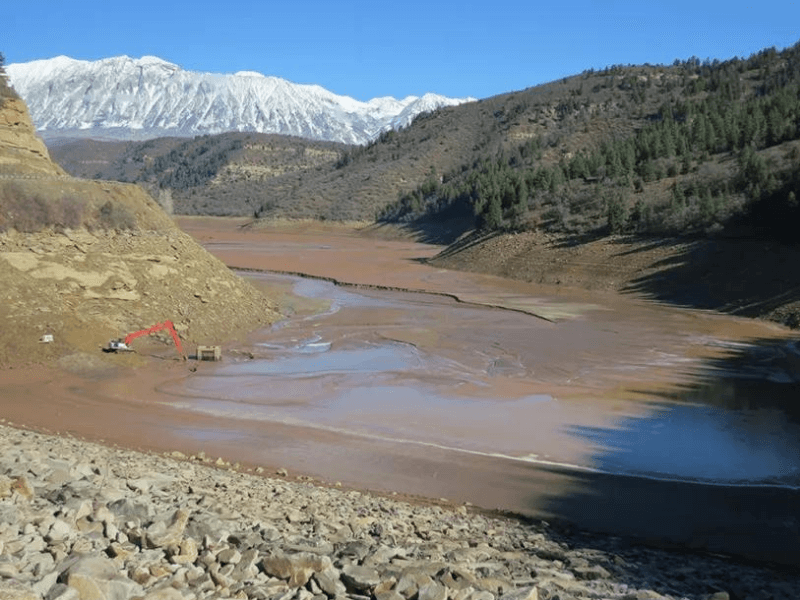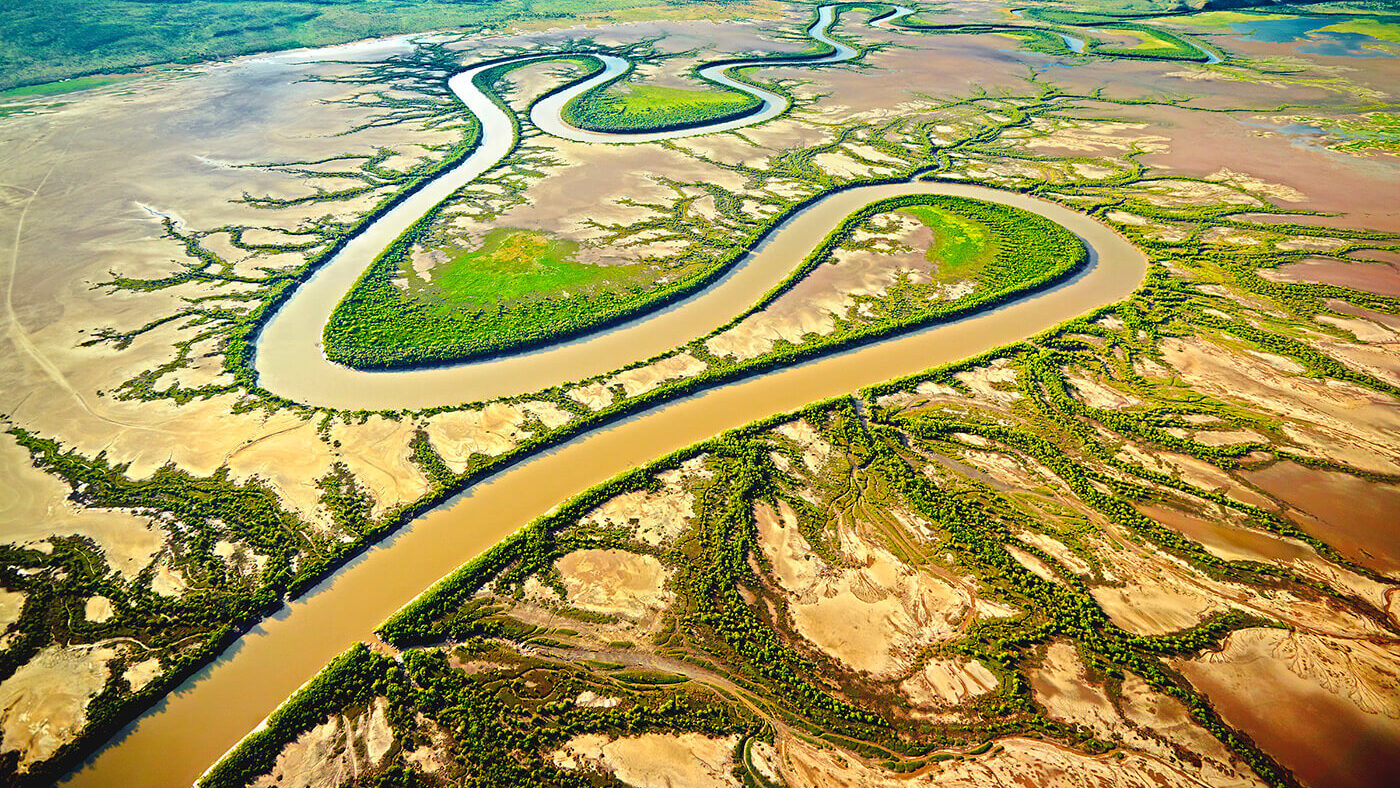Overtime, natural processes and human activity have led to an increase in sediment deposition in lakes, rivers, and oceans, in a process known as sedimentation. Although the sedimentation process is part of the natural geological cycle, there are environmental impacts that are associated with the increase in sedimentation. These include loss of aquatic habitats, degradation of water quality, and increased flooding potential.
In the following article, we’ll answer a few essential questions about sedimentation, including explaining the relationship between erosion and sedimentation, the effects of sediment pollution and how it’s affected by climate change, and human activities that exacerbate the problem.
What is the relationship between erosion and sedimentation?
In order to understand sedimentation, it is important to understand what erosion is and how it contributes to the sedimentation process. Erosion is the process of producing rock fragments (sediments) by weathering different geological structures.
Once erosion occurs, these sediments can be mobilized by rain and are deposited to portions of waterways, such as riverbanks, flood plans, coastlines, and estuaries. Storms deliver large amounts of water to rivers and different bodies of water from surface runoff and tributaries. In these large rain events, not only is water delivered, but also eroded soil and debris from the surrounding landscape.
Sedimentation, then, is the process of allowing particles in suspension in water to settle out of the suspension through gravity. The particles that settle out from the suspension become sediment. Erosion is a natural process, and it is the reason for the different landscapes we see throughout the world and the reason that natural features will change over time.
But there is also some harm that comes from erosion, especially when it is exacerbated by human activity. Sedimentation is just one of the adverse effects of increased erosion, but there is also land degradation, landslides, and coastal erosion.
What are the effects of sediment pollution?
Sediment pollution occurs when sediment enters stormwater and degrades the quality of water for drinking, wildlife, and the land surrounding streams in the following ways:
- Sediment fills up storm drains and catch basins in the streets of residential neighborhoods, which carry water away from roads and homes and leads to an increased potential for flooding. When a heavy rain event occurs, if the water in our streets has no place to go, it will rise and flood yards, cars, and get into our basements and even our homes.
- Sediment pollution causes water to become cloudy, making it difficult for aquatic life to see food, especially in small lakes and ponds. Murky water prevents natural vegetation from growing in water.
- Sediment in stream beds disrupts the natural food chain by destroying the habitat where the smallest stream organisms live. In this way, sediment pollution causes declines in fish populations.
- Sediment increases the cost of treating drinking water and can result in odor and taste problems.
- Nutrients transported by sediment can result in eutrophication, or the process in which excess blue-green algae blooms and can affect wildlife and water quality.
Does climate change impact the sedimentation process?
The world’s climate is changing over time in concert with a growing human population and increased human activity. As the climate continues to change, there is evidence that the sedimentation process may be affected by this global shift.
Current research is consistent in projecting an increase in the frequency and intensity of heavy rain events. These changes could result in greater erosion, higher sediment transport in rivers and streams, and a higher likelihood of landslides, primarily as a result of higher soil water content.
Sea level rise is projected for nearly all locations worldwide. Higher seas could increase the rate of erosion and sediment pollution in some coastal areas. In addition to a rise of sea levels, high temperatures can also contribute to erosion and sedimentation by increasing slope instability by enhancing the thermal breakdown of rock, decreasing the viscosity, and thawing frozen ground so more water infiltrates.
Furthermore, vegetation loss from water stress or wildfire can lead to increased soil surface erosion and sediment transport to streams during rain events. Loss of vegetation from fire temporarily reduces the ability of soils to absorb moisture, increases surface runoff, and boosts sediment transport.Finally, an increase in human activity can also cause erosion and sedimentation, including deforestation, increased construction, and the increase in non permeable surfaces such as growth of cities and increase in highways.

Source: “Sediment Mismanagement Puts Reservoirs and Ecosystems at Risk” – Eos
How do humans cause sedimentation?
Construction projects are one of the largest contributors to sediment pollution. When stormwater flows through an active jobsite, it can pick up pollutants from debris, chemicals, and construction materials that will eventually transport to the city’s storm sewers or local waterways.
This runoff can affect plants and wildlife, as well as block drainage lines, requiring costly cleanup. Because of that, as an amendment to the Clean Water Act, the Environmental Protection Agency (EPA) created the Stormwater Pollution and Prevention Plan (SWPP). The Federal EPA sets the standards for states to follow with their National Pollutant Discharge Elimination System (NPDES) and General Permit from Construction Activities.
These permits and systems regulate stormwater management on site, particularly construction sites. The basic requirement includes any construction project that disturbs more than one acre of land is required to have an SWPPP and permit by the City or State. State and local agencies follow these guidelines and may adapt even more stringent requirements.
The program requires a third party contractor or engineer to develop a plan for stormwater management and conduct inspections to ensure the proposed plan is being executed and followed correctly by the developer, general contractor, or subcontractors.
How can VERTEX help?
VERTEX has a team of environmental professionals, including hydrogeologists, geologists, and engineers, that have the expertise to opine on the cause, origin, and timing of sediment pollution, determine the necessary response activities, the extent of the impacts, identify any potentially responsible parties, determine the appropriate remedial efforts and regulatory reporting necessary to correct the environmental condition, and experience to evaluate costs for reasonableness.
VERTEX’s strategic nationwide locations allow us to mobilize on behalf of our clients to identify and mitigate challenges associated with pollution claims. To learn more about our Environmental Services, or to speak with a Forensic Expert, call 888.298.5162 or submit an inquiry.
To learn more about VERTEX’s Environmental Services, or to speak with a Forensic Expert, call 888.298.5162 or submit an inquiry.




